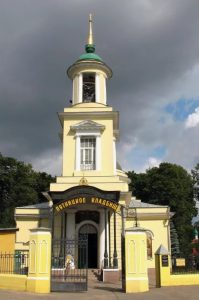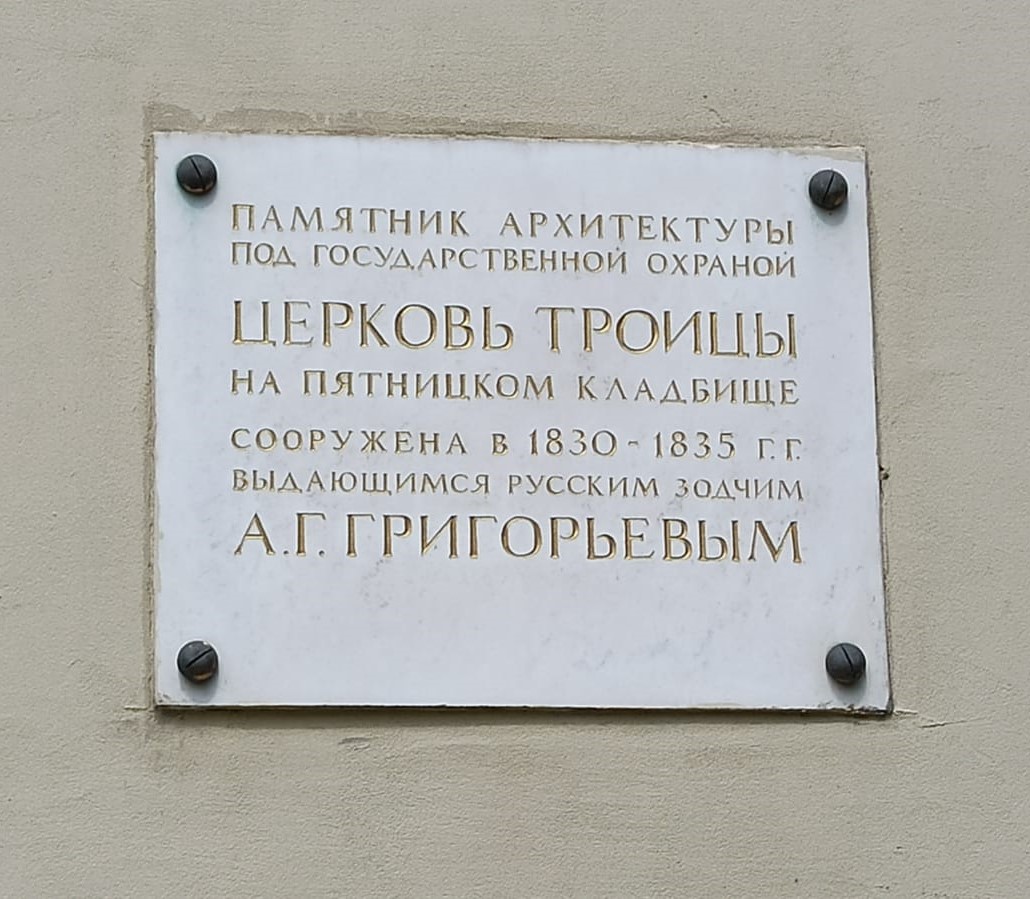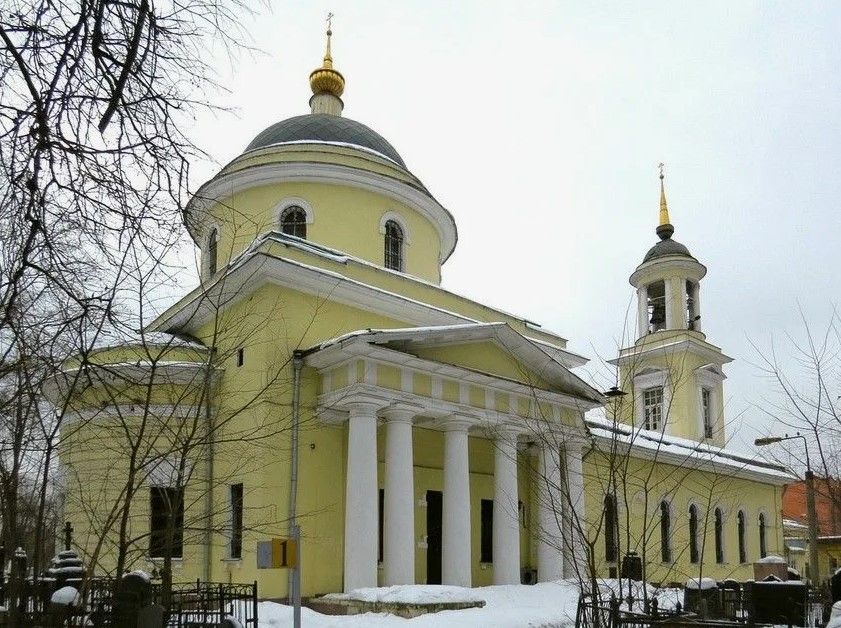Church of the Holy Life-giving Trinity at the Pyatnitskoye cemetery

The Church of the Holy Trinity at the Pyatnitskoe cemetery is an Orthodox church in the north—east of Moscow. It belongs to the Trinity Deanery of the Moscow City Diocese. At the end of the XVIII century, a plague epidemic began in Moscow, which spread rapidly, taking away 500-800 inhabitants daily. Corpses were buried in courtyards and gardens, as there were not enough churchyards, special burial places. On November 1, 1771, by decree of Catherine II, the mayor P. D. Eropkin ordered the allocation of places for new cemeteries outside the city, that is, behind the rampart surrounding the city along the perimeter, the memory of which is preserved in the titles: Sushchevsky Rampart, Zemlyanoy Rampart, Koroviy Rampart and others. In the following 1772, on December 25, according to the old style, on the day of the Nativity of Christ, a wooden church was erected at the Krestovskoe cemetery, consecrated by the name of St. Paraskeva of Serbia (Paraskeva-Petka, which means “Friday” in Russian), subsequently the cemetery became known as Pyatnitskoe. In 1778, during a summer thunderstorm, the church was severely damaged: the entire roof was blown off and the bell tower was damaged. The church was repaired by the joint efforts of the priest and parishioners, but it fell into disrepair due to scanty donations from poor people and low attendance soon. In 1827 , through the efforts of the rector Simeon it was managed to get permission from the Spiritual Consistory to establish a circle to collect donations from pilgrims going to the Trinity-Sergius Lavra, to build a new stone church instead of a wooden one, for which a chapel was even built on Troitskaya Road, where icons from the old church were moved. In September 1828 merchant Sveshnikov bequeathed his estate and money (to commemorate the soul) for the construction of a new stone temple and two houses. The so-called Russian classicism (Empire style) dominated in the architecture of Moscow at that time, as a response to memories of Russia’s recent victory over Napoleon in 1812. This style is distinguished by monumental forms with the indispensable erection of columns along the facade decorated with elements of military paraphernalia, which gave the building grandeur and caused a sense of peace in the soul of people. It was reflected in the construction of the temple, the construction of which began in 1830, after all the reconstructions, the church externally acquired the shape of a cross: there is the main altar facing east in front, the chapels of Paraskeva of Serbia and Sergius of Radonezh. On the west side there is an entrance with a porch decorated with cast iron columns and an icon of the Holy Trinity at the top. After the revolution, the church was closed, the crosses were removed, and the room was used for housing and industrial needs, for warehouses of cemetery equipment. Only in 1978-1980 the chapel was returned to the church community. The restoration of the church began only in 1990, when the crosses were erected again. Restoration work was carried out, as a result of which the appearance was as close as possible to the original version. The renovated chapel at the Pyatnitskoe Cemetery was consecrated by Patriarch Alexy II on October 27, 2000.
Address: Moscow, Droboliteyny lane, 5, p. 1

